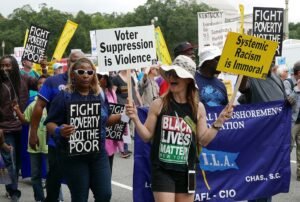November 2, 2012; Source: Brookings Institution
It’s so confusing. Is the economy improving or stagnating? Is a rising tide lifting all ships or are a few ships still taking on water? Even if aggregate national employment numbers show evidence of improvement, why doesn’t it feel like it in so many communities around the nation?
Writing for a Brookings Institution blog, Gary Burtless pronounced last week’s report from the Bureau of Labor Statistics “another heartening report on job market progress.” Although the national unemployment rate inched upwards to 7.9 percent, it still stayed below eight percent for the second month in a row and employers added 171,000 jobs in October. Writing for the Brookings Institution’s Hamilton Project, economists Michael Greenstone and Adam Looney suggest that “the economy’s prospects have greatly improved and there is reason for optimism” and that “the net result is an economic future that looks brighter today than it did four years ago.”
As readers remember, four years ago, the nation’s economy was, as Greenstone and Looney acknowledge, heading toward a freefall. In the nation’s presidential election of that year, candidates dashed to Washington and John McCain even suspended his campaign in order to deal with the Wall Street bailout. Looking backwards at 2008, the two Hamilton Project economists see “vastly improved” economic indicators, including higher consumer confidence, increased housing market activity, higher home prices, and upticks in consumer purchases and manufacturing output—and a stock market that is 40 percent higher than in October 2008.
Sign up for our free newsletters
Subscribe to NPQ's newsletters to have our top stories delivered directly to your inbox.
By signing up, you agree to our privacy policy and terms of use, and to receive messages from NPQ and our partners.
They don’t dodge the still-incredible “jobs gap” of 11.1 million jobs; if the economy adds 208,000 jobs a month (“the average monthly rate for the best year of job creation in the 2000s”), the gap will not be closed until July 2020. If the economy generates a total of 321,000 jobs a month, it will still take until November 2016 to reach pre-recession employment levels. Nonetheless, in the October jobs report, Burtless sees “continued recovery from the nation’s worst post-war slump” and “fresh evidence it is easier to land a job.”
Maybe at the aggregate national level Burtless is correct, but tucked into the jobs report were some distressing numbers that raise questions about persistent and perhaps increasing divisions in our society. The unemployment rate among African Americans rose from 13.4 percent in September to 14.3 percent in October. Compare that to the unemployment rate among whites in the civilian labor force, which dropped to seven percent in September and stayed there in October (for Asian-Americans, the unemployment rate was 4.9 percent). The unemployment rate of blacks in the U.S. is twice that of whites. The same occurs for young people between the ages of 16 and 19; for whites, the unemployment rate is 20.6 percent and for African Americans it is 40.5 percent. For comparison’s sake, the overall unemployment rate for Latinos was 10 percent and for Latinos aged 16 to 19 28.9 percent.
Some jobs statistics in the October report are both disturbing and perplexing. For example, compared to a year ago, the unemployment rate of veterans dropped from 7.7 percent to 6.3 percent. For male veterans, it fell from 7.7 percent to 5.9 percent, but for women veterans, it rose from 7.6 percent to 9.5 percent even as the labor force participation rate of women veterans (unlike their male counterparts) dropped from 62.5 percent to 60.4 percent, usually a factor that lowers the unemployment rate. Similarly, for veterans of the recent Gulf Wars, the male veteran unemployment rate fell during the past year from 12.3 percent to 9.2 percent, while the unemployment rate for female Gulf War II veterans rose from 10.9 percent in October 2011 to 15.5 percent in October 2012.
Like September, part of the increase in employment is due to part-time employment. For all industries, the number of people who worked part-time because they could only find part-time jobs rose from 2,507,000 in August 2012 to 2,572,000 in September and to 2,614,000 in October. The number of people who worked part-time for “non-economic reasons” such as family obligations or child care issues also rose from 18,736,000 in September to 18,923,000 in October. The number of people who worked part-time because of slack work or business conditions decreased to the still very large number of 5,219,000 million. With over 27 million in the employed category working part-time, that’s nearly one out of five people with jobs in the U.S. economy.
We add these last statistics for emphasis: The number of people who have been unemployed for 27 weeks or longer grew from 4,844,000 in September to 5,002,000 in October. The proportion of all unemployed people who have been unemployed 27 weeks or longer increased from 40.1 to 40.6 percent. The mean duration of unemployment increased from 39.8 to 40.2 weeks, and the median unemployment duration went from 18.5 to 19.6 weeks. Maybe Burtless sees the October report as indicating that it’s now easier to find a job, but for many people in the labor force, it’s no change.—Rick Cohen













